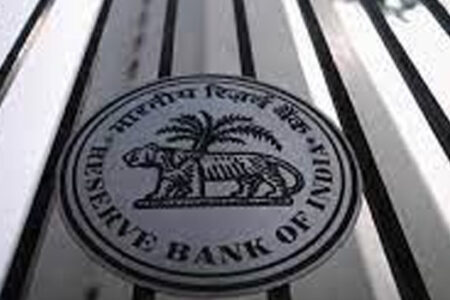Are you aware of India’s most flexible investment product? If not, here it is. It offers up to 12 per cent return. The funds can be withdrawn any time after the commitment period; there’s no volatility in monthly cash flows; and there’s no hidden charge.
For six months, the interest rate is up to 9 per cent; for 12 months, it rises up to 10 per cent; for 24 months, up to 11 per cent; and for 36 months, up to 12 per cent. You beat inflation and witness your money growing every day.
Is this an advertisement for a bank’s fixed deposits? A mutual fund? A deposit-taking non-banking financial company (NBFC)? No, this is from an NBFC that holds the licence of P2P, or peer-to-peer, lending.
P2P is an online marketplace or a lending platform, which collects money from individuals and lends to individuals as well as micro and small enterprises. The loans are collateral-free.
In March 2016, the Reserve Bank of India (RBI) issued the first draft on P2P lending for consultation with the stakeholders. The licensing norms were finalised in October 2017. Apart from being “fit and proper” to run the P2P platforms, one must have at least Rs 2 crore net-owned funds.
The RBI has issued around 25 licences so far, but not all of them have gone live. Analysts peg the annual disbursement by the industry last year at around Rs 12,000 crore.
Initially, one could lend Rs 10 lakh. In December 2019, the amount was raised to Rs 50 lakh. A lender can give this money to multiple borrowers across P2P platforms. A borrower, however, cannot get more than Rs 10 lakh, irrespective of the number of lenders. Finally, a lender’s exposure to a single borrower is capped at Rs 50,000.
The interest rate charged to the borrowers is in the range of 18-20 per cent or more, but lower for the customers with high credit ratings.
How does a P2P firm make money? It earns fees from both the lenders and the borrowers. It doesn’t have any balance sheet. Its job is to connect a lender with a borrower.
It cannot raise deposits; neither can it offer any credit enhancement/guarantee facility. It also cannot use the funds received from lenders and repayment from borrowers for lending directly to an entity and cross-sell any financial product, except for insurance cover for loans given. And, it cannot offer any guaranteed returns to the lenders.
Enticing the lenders with almost fixed (using “up to” prefix) return is not done by just one entity. Many are following this formula. Typically, the interest rate offered is the lowest when there’s no lock-in (one can withdraw money anytime one wants). How can this happen when a loan of a particular duration is funded by a lender or group of lenders? By removing the lock-in period, the lender-borrower link is broken. This could lead to serious asset-liability mismatches and create a systemic risk.
I understand that even some of the mutual fund distributors are selling P2P products offering fixed returns (using the “up to” caveat) for a fixed period of maturity.
There are also instances where the P2P platforms are crediting interest to the escrow account of the lenders daily. It is only possible when a P2P platform brokers a loan with a daily repayment arrangement. But that’s not the case. Clearly, these platforms are making money available for the lenders even before it’s collected from the borrowers.
Anytime withdrawal of money by the lenders is possible when one is leveraging one’s own balance sheet or transferring good and bad loans to a new lender. The bad loans are taken care of by ensuring a continuous flow of money from the lenders. What will happen when the inflow slows down and withdrawal goes up? Market watchers say at least one P2P NBFC has sold bad assets worth a few hundred crores to an asset reconstruction company in the recent past.
How can all investors get the same return and instant liquidity when the borrowers are very different from one another and loan rates are not the same for all? What’s happening is some of the P2P platforms are creating a pool of funds to lend. There is no pre-disbursal lender-borrower relationship, the hallmark of this business model.
In the process, aren’t they sowing the seeds of asset-liability mismatches? At least one P2P lender is deftly managing its assets and liabilities by keeping around 10 per cent money undisbursed. As the loans given are of shorter duration, at any given point of time a certain percentage of loan portfolio rolls back, helping it meet premature redemptions.
Clearly, this entity is “managing” deposits with fixed term and returns instead of offering a meeting platform to the borrowers and the lenders. Incidentally, even RBI-licensed deposit taking NBFCs are not allowed to take deposits for less than 12 months.
Anytime withdrawal makes such funds what are known as “liquid funds” in the mutual funds industry. The liquid funds are invested in short-term money market instruments such as treasury bills, commercial papers and certificate of deposits, and there is no lock-in period for the investors. But here the loans have fixed maturity.
The most innovative way of doing the P2P business is “renting” out the licence to unregulated entities. A few enterprises, including credit card payments apps and merchant payment aggregators, have been doing this. The backdoor entry helps them avoid the RBI’s direct supervision.
Is this permissible? If you ask a P2P NFBC, the answer is yes. The master directions for the P2P lending platform, initially released in October 2017 (and subsequently updated many times) outline the “outsourcing” policy.
They say, “An NBFC intending to outsource any of its financial activities shall put in place a comprehensive outsourcing policy, approved by its board, which incorporates, inter alia, criteria for selection of such activities as well as service providers, delegation of authority, depending on risks and materiality and systems to monitor and review the operations of these activities.”
But renting out one’s licence is not “outsourcing” and the P2P platforms cannot play the role of a fund manager.
Zopa of the UK, the first P2P lending company globally, started its business in 2005, connecting borrowers with investors looking for a handsome return. The US saw the birth of its first P2P lender, Prosper, soon after Zopa’s entry.
New Zealand and China made it a global phenomenon last decade. In fact, it was a craze in China with more than 5,000 P2P lenders recording at least $450 billion annual turnover. But, by 2020, it vanished from China’s financial landscape after a severe clampdown by central and local regulators to stop the malpractices.
Precedence Research pegs the value of the global P2P lending market at $83.79 billion in 2021. The market research and consulting firm expects it to be $705.81 billion by 2030, registering a compounded annual growth rate of 26.7 per cent. The largest market is North America and the fastest-growing is Asia Pacific.
One only hopes that the P2P market in India does not go the China way. In June, the RBI stopped cobranding of prepaid payment instrument (PPI) products with unlicensed companies. This has forced a few companies to discontinue UPI services as they do not hold PPI licence. They had been offering UPI services through a co-branded arrangement with a non-bank PPI licence holder.
Before it is too late, the RBI should come down on the practice of renting out the P2P licence, playing the role of deposit-taking NBFCs, offering daily interest without repayment from the borrowers and creating asset-liability mismatches for some of them. They are not creating a marketplace.
This column first appeared in Business Standard
The columnist is a Consulting Editor with Business Standard and Senior Adviser to Jana Small Finance Bank.
His latest book: Roller Coaster: An Affair With Banking
Twitter: TamalBandyo
Website: https://bankerstrust.in



